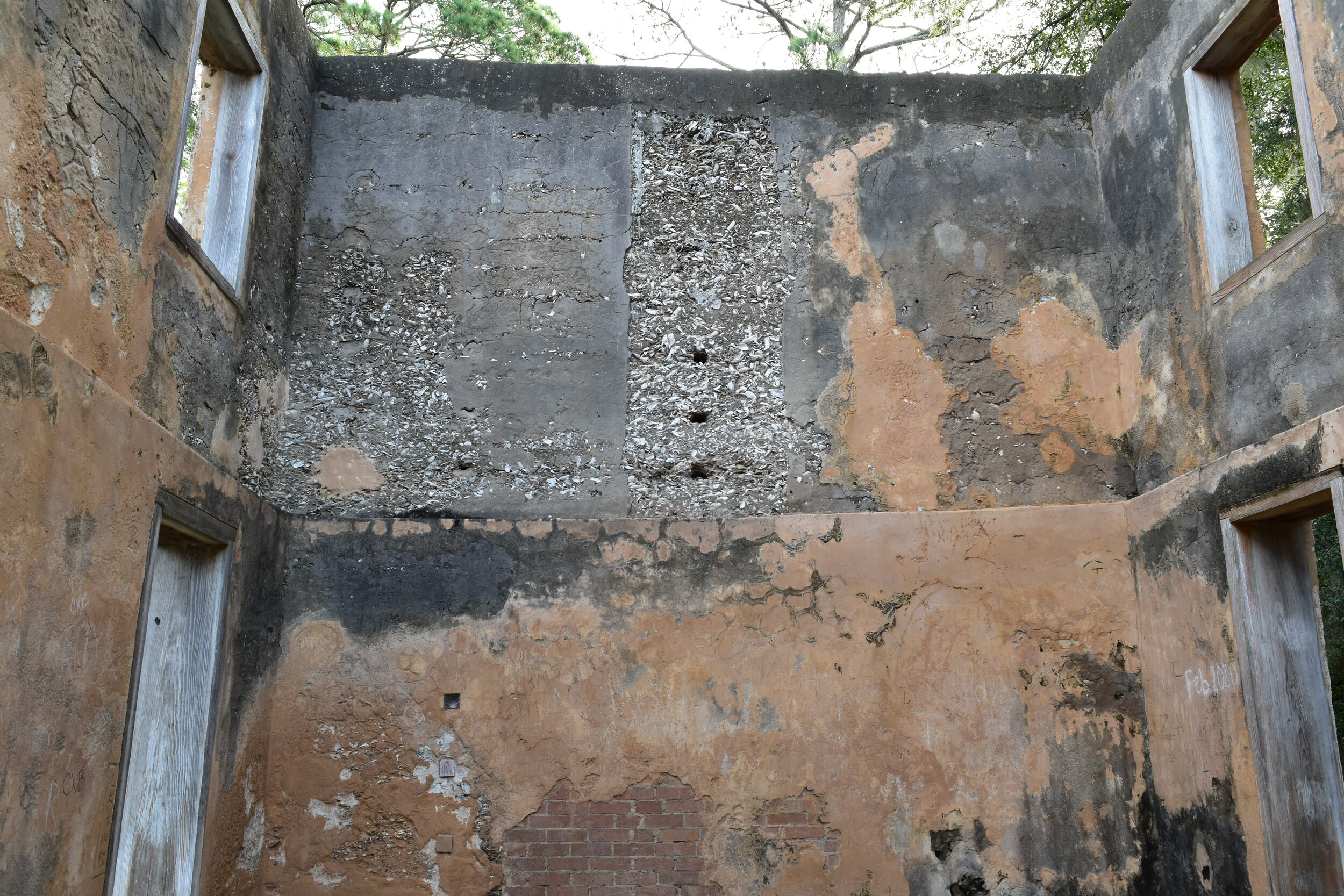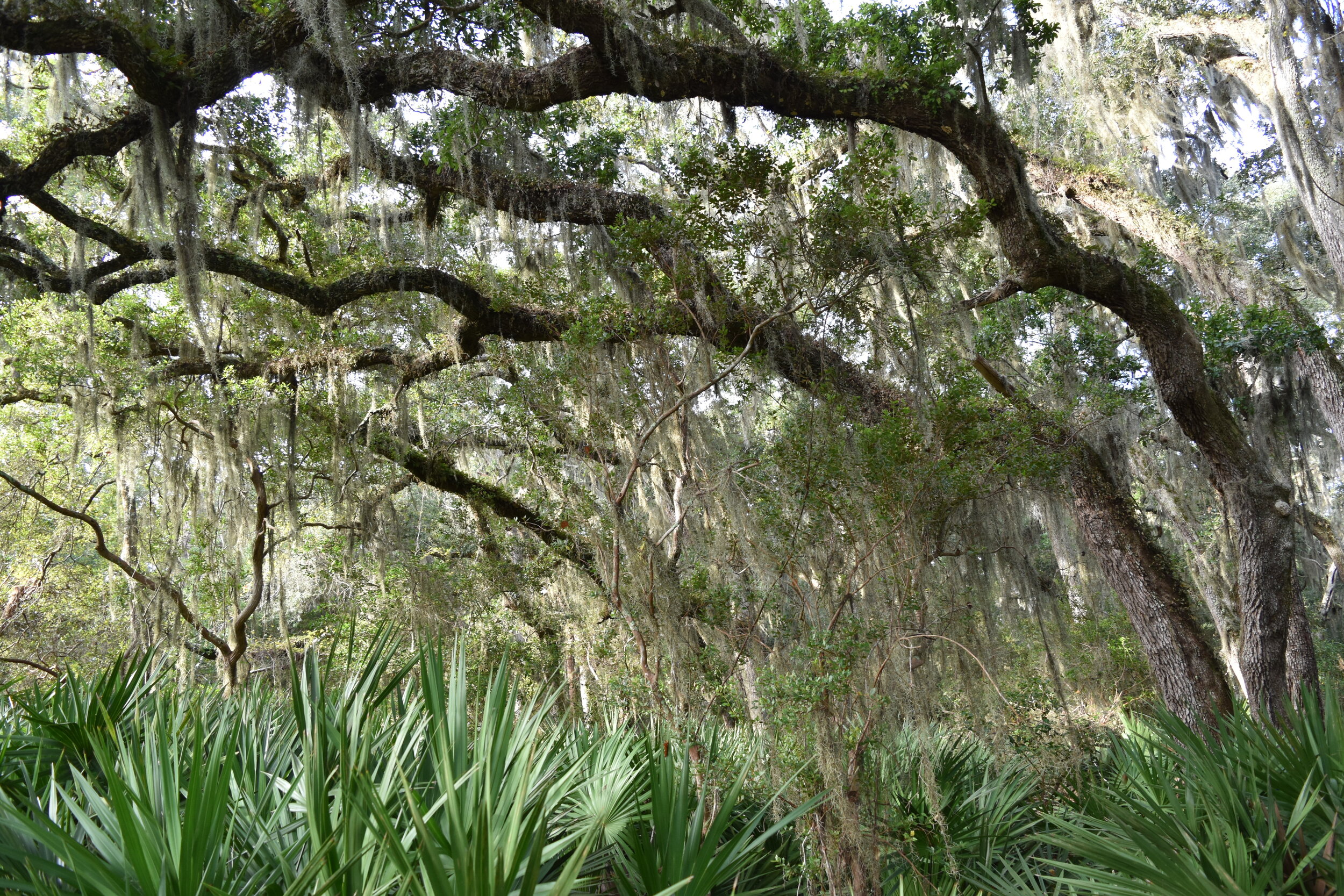
Horton House
Major William Horton arrived on Jekyll Island in 1736 as the first European immigrating from England to occupy the land. There he built his first house which was destroyed during an attack by the Spanish in 1742. In 1743 he built what is now known as the Horton House. This is one of oldest tabby houses still standing in Georgia. Tabby was a common building material at that time. It consisted of a mixture of sand, lime, oyster shells and water. This mixture was poured into forms and allowed to harden. The shells are visible in the walls of the ruins. Very unfortunate is that visitors have carved initials or names into the walls of this historic building.
With the help of his servants, Horton cultivated the land on the island and raised livestock. Some of the crops included corn, barley, rye, hops, cotton, grapes, and indigo, while livestock included cattle and sheep. The crops raised on Jekyll Island were also used to support the soldiers and townspeople at Fort Frederica on St. Simons Island. Today there is a walking trail, the Tupelo Trail, that leads from the former homesite to Horton Lake. This trail leads through a forest of huge living oak trees and countless smaller palm trees.
Later, after the Revolutionary War, the DuBignon family repaired the Horton house and resided therein while they also continued cultivation of the island. The DuBignon family, which immigrated from France, purchased Jekyll Island in 1791. The former owners are buried in a small cemetery across from the Horton House. The family owned the island until 1886 and then sold it to a group of millionaires who would later form the Jekyll Island Club, the birthplace of the Federal Reserve.












